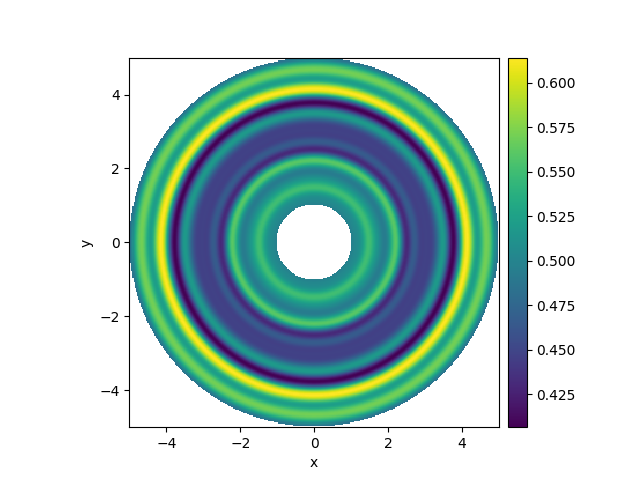Note
Go to the end to download the full example code
2.7 Spherically symmetric PDE
This example illustrates how to solve a PDE in a spherically symmetric geometry.

0%| | 0/0.1 [00:00<?, ?it/s]
Initializing: 0%| | 0/0.1 [00:00<?, ?it/s]
0%| | 0/0.1 [00:02<?, ?it/s]
7%|▋ | 0.007/0.1 [00:02<00:28, 309.94s/it]
40%|███▉ | 0.04/0.1 [00:02<00:03, 54.25s/it]
40%|███▉ | 0.04/0.1 [00:02<00:03, 54.27s/it]
100%|██████████| 0.1/0.1 [00:02<00:00, 21.71s/it]
100%|██████████| 0.1/0.1 [00:02<00:00, 21.71s/it]
from pde import DiffusionPDE, ScalarField, SphericalSymGrid
grid = SphericalSymGrid(radius=[1, 5], shape=128) # generate grid
state = ScalarField.random_uniform(grid) # generate initial condition
eq = DiffusionPDE(0.1) # define the PDE
result = eq.solve(state, t_range=0.1, dt=0.001)
result.plot(kind="image")
Total running time of the script: (0 minutes 2.359 seconds)